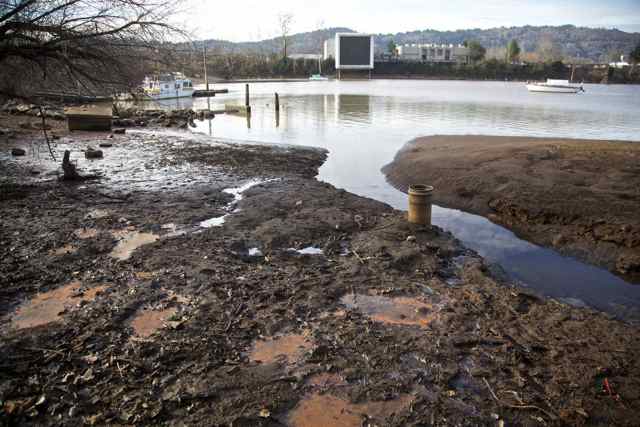forum
library
tutorial
contact

Big Corporations Can Afford to Pay
for Willamette Superfund Cleanup
Jim Robison and Jackie CalderThe Oregonian, October 10, 2015
|
the film forum library tutorial contact |

|
Big Corporations Can Afford to Pay
Jim Robison and Jackie Calder |
 In its editorial on the Willamette River Superfund cleanup, The Oregonian/OregonLive editorial board overlooked one important stakeholder: the community. Citizen advisers and community partners maintain that getting the cleanup right is more important than getting it done fast or cheap. There needs to be long-term effectiveness since recontamination of cancer-causing and endocrine-disrupting chemicals serves no one -- not the polluters, community, river animals or the environment. All users of the river have a right to safety and health.
In its editorial on the Willamette River Superfund cleanup, The Oregonian/OregonLive editorial board overlooked one important stakeholder: the community. Citizen advisers and community partners maintain that getting the cleanup right is more important than getting it done fast or cheap. There needs to be long-term effectiveness since recontamination of cancer-causing and endocrine-disrupting chemicals serves no one -- not the polluters, community, river animals or the environment. All users of the river have a right to safety and health.
Community members agree with the Environmental Protection Agency that the use of monitored natural recovery should be limited. The river is ever-changing, and what material is deposited in one season may scour away in another season, making the burial of contaminants unreliable. The river bottom is volatile. Rocks and debris can move with force. The Willamette is subject to floods, and there are fault lines on either side that could prove disastrous in a geological event, such as the expected Cascadia Subduction Zone earthquake. Relying on clean sediment from upriver to cover up contaminants is a temporary fix and likely to result in later recontamination.
Many of the chemicals of concern do not break down by natural means, or they break down at such a slow rate that unacceptable damage to the ecosystem will continue to accrue. Heavy metals in the river's sediment (such as mercury and lead), asbestos and persistent organic pollutants will continue to harm river life that comes in contact with them. These metals and persistent chemicals have been in the river bottom for 50, 100, even 150 years. The only way to reliably reduce their damage to the health of the river is through removal.
Nor do community members favor the "dilution-is-the-solution-to-pollution" school of remediation. We can no longer afford to assume the chemicals dumped or leaked will simply go away by being washed downriver to become someone else's problem. The food chain continues to carry contaminants from the small creatures in the sediment that serve as the basis of life, up to fish, then to birds, mammals and humans.
Community members also want the cleanup to be efficient. But before becoming "mind-numbed" by the price tag, let's remember that among the 150 to 200 possible companies funding the cleanup, a number are multinational corporations, including ConocoPhillips, Bayer CropScience, Chevron and ExxonMobil, just to name a few. The combined profits of just these total more than $312 billion per year. Put this in perspective with a one-time cost of $2 billion that is spread over five to 30 years and split among them all to make the river safer for all time.
The river is held in trust for citizens, from headwaters to confluence. It is our river. This is our one chance to make a difference in the lower Willamette River. Let's have the fortitude to ask industry to step up and do the clean up right the first time.
Citizens who support an effective cleanup will host a press conference on Oct. 19, at 11:00 a.m. on the shores of the Willamette River at Cathedral Park (at the end of North Pittsburg Avenue). To keep updated on the cleanup, sign up for the free Portland Harbor Community Advisory newsletter, The Willamette Insider, at www.PortlandHarborCAG.info.
Jim Robison is chair, and
Jackie Calder is vice chair of the Portland Harbor Community Advisory Group, which includes Willamette Riverkeeper, the Audubon Society of Portland and the Portland Harbor Community Coalition.
Big Corporations Can Afford to Pay for Willamette Superfund Cleanup
The Oregonian, October 10, 2015
learn more on topics covered in the film
see the video
read the script
learn the songs
discussion forum
